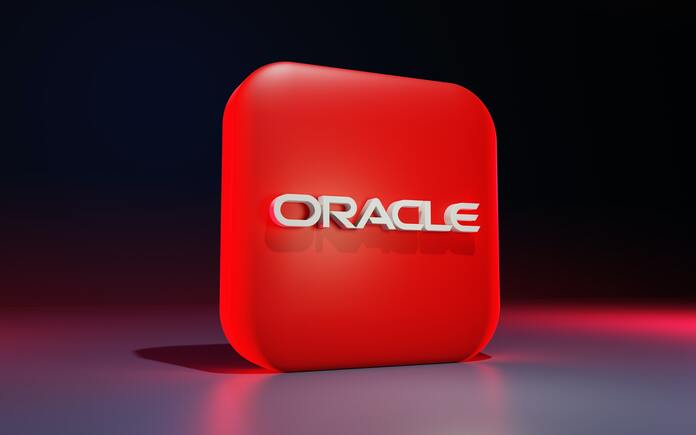Oracle Stock (NYSE:ORCL)
Oracle (NYSE:ORCL) is an established player in the IT industry. Since its inception in 1977, the company has maintained a commanding market position because of proprietary hardware/software synergy, high switching costs for existing customers, and profit-locking licensing rules. The challenge is whether or not the rate of success over the long term can keep up with the rate of invention in the modern world.
Due to the availability of Exadata hardware, which is designed to power enormous Enterprise Resource Planning (ERP) IT systems, Oracle’s cloud infrastructure (OCI) stands apart from other cloud offerings. Due to Exadata’s special characteristics, Oracle may use Azure as the web interface for its full-stack OCI cloud hosting offering. Exadata and the proprietary software that powers it produce something really special.
As its name suggests, enterprise resource planning (ERP) software is designed to integrate all aspects of running a business. Everything from payroll to customer resource management is taken care of by it. When a company switches to an enterprise resource planning system, that ERP becomes the central processing unit for the whole operation. Since eliminating it would be costly and time-consuming, most managers live with it despite its obvious flaws. The inherent nature of an ERP further strengthens the customer lock-in that already exists due to Exadata and custom code.
You can only go anywhere in the B2B sector if you encounter Oracle. Mainly, it sells goods and services to businesses all over the globe designed to improve their IT infrastructure. Direct and indirect sales channels are used to promote and sell the company’s cloud, licensing, hardware, support, and services products to organizations across various sectors, government agencies, and educational institutions.
Forecasts for Oracle’s Revenue and Profit
According to projections, there is an expected 12.0% increase in sales over the next two years. This is consistent with Oracle’s normal growth rate of 12.3% over the last several years.
As would be anticipated, Oracle’s revenue situation remains steady. Oracle was already riding the SaaS wave before it was cool. Since Oracle’s licenses are often purchased in one-year or multi-year chunks, they are mostly unaffected by short-term swings in the economy.
For 2019, analysts predict an EPS of $4.84–$5.00; for 2020, they predict an EPS of $5.18–$5.79; and for 2024, they predict an EPS of $5.40–$5.80. This means that Oracle has a 7.0% annual growth rate that is likely to be realized. We must, however, investigate the foundation upon which this assessment rests. In 2021 and 2022, earnings will surge beyond historical norms. The forecasts for 2023 and 2024 suggest a resumption of historical patterns.
Oracle’s revenue streams are sustainable over the long term, and when profits fluctuate despite a stable revenue picture, it’s often due to rising expenses. Exadata, the accompanying software, and the exclusive nature of Oracle’s enterprise resource planning (ERP) services make the company a safe investment over the long term.
Potential for Expansion
Warren Buffett enlightened us in his 2007 Letter to Shareholders by outlining the essential qualities of a successful company. He said that a steady flow of income that requires little in the way of initial investment is preferable. He has expounded on this idea several times, defining it as the profit made via NTA that has not been borrowed against. A company’s expansion rate is proportional to its required amount. To provide fair comparisons across businesses, we deleverage their assets, making those with more debt and a higher risk tolerance seem no better than those with lower debt loads.
As a business, Oracle falls somewhere in the center. The 7.3% yield is comparable to the average of S&P 500 companies. The lesson here is that Oracle’s Unleveraged Net Tangible Assets will expand by less than rival IT giant Microsoft.
Risk Projection
If I need to know where my money stands, I use Risk Forecast. I leverage historical data and projections from analysts at major brokerage companies in my AI to make forecasts.
Oracle’s risk is reasonable in light of the potential reward. The current value at risk for Oracle stock is 12%, while the potential return is 13%. Considering the long-term average price at which Oracle has traded and the long-term price forecast of $103.02, this represents a 13% increase.
Oracle uses a set of machine learning algorithms that are trained with historical data on revenue and the federal funds rate to provide a price risk estimate. An explanation of the chart would be helpful. The company’s anticipated intrinsic value is shown in blue bands, with actual price data plotted next to the bands. The grey projected section demonstrates the relationship between the $87.74 price at the time of projection and the true worth of the firm.
Long-term price movements are predicted rather well by the algorithms. However, the price will sometimes break out of the blue bands. Ninety percent of the time, the bands indicate an appropriate price range. Like our other stock price predictions, this prediction lags behind the market when prices fall but leads when prices rise. As a result, it helps assess stock risk but could be more reliable for predicting market movements.
The Shareholders’/Capitol Allotment Process Begins Again
As we learn from Warren Buffett, there are two ways a business might return profits to its investors. The primary way the corporation may boost the value of its stock is by growing its long-term earnings power. In addition, a corporation may increase value by giving money back to its investors. Another option may be to gain a competitive edge over the long term via organic expansion or mergers and acquisitions while returning surplus capital to shareholders through dividends or share repurchases.
With a 2% dividend yield and a 9.1% share buyback yield, Oracle has a respectable 11% yield for investors. Yields like these are quite impressive. The yield should be excluded from projections, however. Although the company spent $16 billion on share buybacks in the first two quarters last year, Oracle has only spent $2 billion this year. The originally reported return prediction is correct and includes this lower pace of share repurchases.
Conclusions and Remarks
To say that Oracle is a powerhouse would be an understatement. It has shown its ability to give clients long-term value via many of its fundamental technologies and business methods. According to current analyst projections, revenues for Oracle are expected to remain consistent with the company’s past performance. Oracle stock is a buy as an underweight position in a diversified portfolio due to its sustained revenue growth and presents fair value.
Featured Image: Unsplash @ BoliviaInteligente









